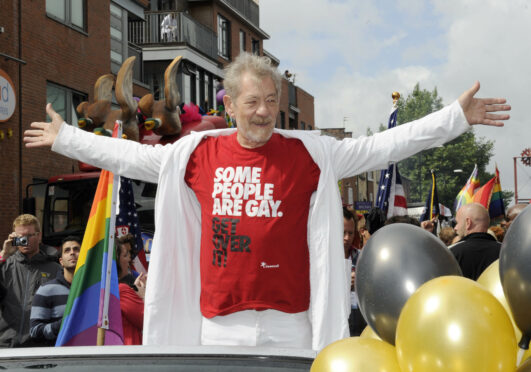
To mark LGBT+ History Month, historian Paul Baker tells Laura Smith the Honest Truth about the history and impact of Section 28.
The controversial law effectively banned teaching about homosexuality and LGBT rights in schools and fostered decades of discrimination.
What was Section 28 and why was it controversial?
It was an amendment to an existing law called the Local Government Act (1986). Essentially, it added a new section to that Act, which prohibited local authorities from “promoting” homosexuality, particularly as “a pretended family relationship”. In the 1980s, a few local councils had tried to reduce homophobia in schools by suggesting that teaching might acknowledge the existence of gay people. This was misinterpreted by some people that gay rights groups were trying to turn everyone’s children gay. The new law was seen as sending a message that the government thought gay people were second-class citizens.
What impact did it have?
Because the wording of Section 28 was so vague, many teachers erred on the side of caution and didn’t feel that they could confront homophobic bullying in schools. LGBT+ children suffered terribly with their mental health and their schoolwork was affected. Section 28 also legitimated a lot of homophobia in society and in the media, meaning that LGBT+ people were at risk from discrimination and violence.
Was anyone ever prosecuted under Section 28?
There was the odd attempt. In Scotland, a Glasgow-based sexual health organisation called PHACE West was taken to court when its website was claimed to have pornographic material. The case was dropped and the council had to promise not to give any money to “promote homosexuality”.
Both sides claimed victory, although the accusers had to pay £7,000 in costs.
How was Section 28 protested?
The government under-estimated the extent of protest against Section 28 and, ironically, it resulted in more people coming out of the closet. There were massive rallies and marches, up and down the UK – a protest in Edinburgh in January 1988 was actually a day of action, incorporating a rally, public meeting and fundraising disco. Some protesters took non-violent direct action, and invaded the House of Lords during one of the key votes.
Sir Ian McKellan was the first big name to speak out against Section 28, and actually came out on Radio 3 during an early debate about it. He co-founded the lobbying group, Stonewall, which tried to encourage dialogue with politicians and attempted to get as many powerful factions in society on their side. It was a slow process and an uphill struggle but they helped to shift attitudes.
When was Section 28 repealed?
Tony Blair’s New Labour government tried to repeal Section 28 in 2000 but they were defeated in the House of Lords. However, the same year Scotland showed it could be done with the newly formed Scottish Executive passing legislation to repeal Section 2A before the rest of the UK, on June 21. Scotland’s success emboldened Westminster and they tried again in 2003. Even in those three short years, attitudes had changed and Section 28 officially became history on November 18, 2003.
Do you think LGBT+ education is adequate in the UK today?
The Children and Social Work Act 2017 states that all children should receive sex education and the statutory guidance on how to implement this says children are to have been taught LGBT content at a “timely point”. Many teachers are more aware of homophobic bullying, but some schools have better policies than others.
The situation is better than in 1988 but we need more programs like No Outsiders, an approach to teaching primary school children about diversity and tolerance, and more educators like its founder, Andrew Moffat. Teachers also need to feel more confident to come out in school.
Outrageous! The Story of Section 28 and Britain’s Battle for LGBT Education, by Paul Baker, Reaktion Books, £9.99

Enjoy the convenience of having The Sunday Post delivered as a digital ePaper straight to your smartphone, tablet or computer.
Subscribe for only £5.49 a month and enjoy all the benefits of the printed paper as a digital replica.
Subscribe